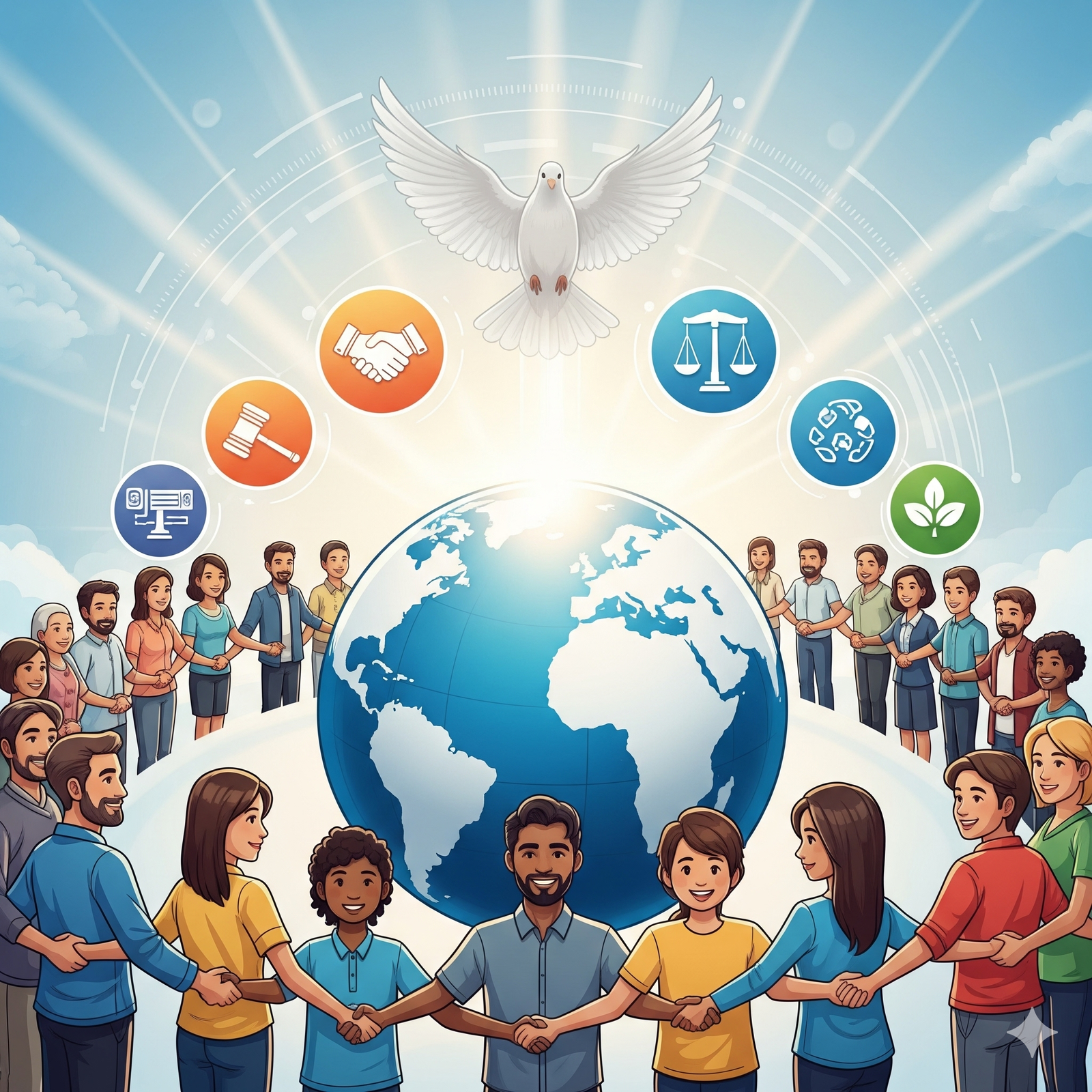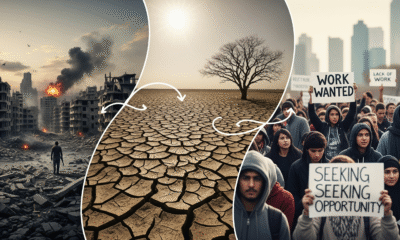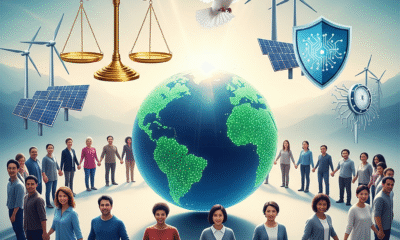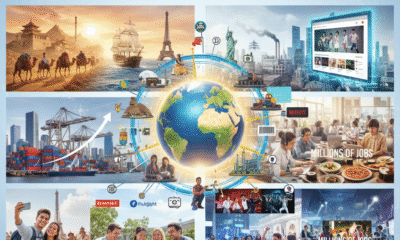Introduction
Peace and security are the cornerstones of global stability. Without them, societies cannot prosper, economies cannot grow, and sustainable development becomes impossible. Yet in today’s interconnected world, peace & security are constantly threatened by armed conflicts, terrorism, cyberattacks, climate change, and political instability.
From the war in Ukraine to escalating tensions in the South China Sea, and from the rise of cyberwarfare to violent extremism, the challenges are diverse and deeply complex. Ensuring security is no longer just about military strength—it now involves international law, diplomatic relations, global governance, sustainable development, and international cooperation. This article explores the evolving dimensions of peace and security, current challenges, and the global efforts being made to build a more stable future.
Understanding Peace & Security in the 21st Century
- Traditional Security
- Focused on protecting national borders and preventing interstate wars.
- Military alliances such as NATO remain vital in deterrence strategies.
- Human Security
- Goes beyond military concerns, focusing on individuals’ safety, rights, and well-being.
- Includes issues like poverty, hunger, global health, and access to education.
- Cyber and Digital Security
- Cyberattacks on critical infrastructure, elections, and financial systems threaten nations.
- Example: Allegations of election interference through digital warfare.
- Environmental Security
- Climate change creates resource scarcity, leading to conflicts over water, land, and migration.
- Example: Desertification in Africa contributing to instability in the Sahel region.

Major Threats to Global Peace and Security
- Armed Conflicts and Wars
- Ongoing wars in Ukraine, Yemen, and Sudan destabilize regions.
- Proxy wars involving superpowers complicate peace negotiations.
- Terrorism and Extremism
- Groups like ISIS, Boko Haram, and Al-Shabaab exploit fragile states.
- Counterterrorism requires intelligence sharing and international relations.
- Nuclear Proliferation
- Tensions around North Korea and Iran’s nuclear ambitions highlight risks.
- Strengthening treaties like the Non-Proliferation Treaty (NPT) is critical.
- Cybersecurity Threats
- Hackers target energy grids, healthcare systems, and global trade networks.
- Cybersecurity is now a pillar of global governance.
- Economic Inequality and Social Unrest
- Disparities in wealth and opportunity fuel instability.
- Peace cannot exist without sustainable development and inclusivity.
The Role of International Law in Peace & Security
- United Nations Charter
- Prohibits use of force except in self-defence or with UN Security Council approval.
- Serves as the foundation of international law on security.
- International Criminal Court (ICC)
- Holds individuals accountable for war crimes, crimes against humanity, and genocide.
- Example: Prosecution of leaders responsible for atrocities in the Balkans and Rwanda.
- Arms Control Agreements
- Treaties like the Comprehensive Nuclear-Test-Ban Treaty (CTBT) aim to limit weapons proliferation.
- However, enforcement remains inconsistent.
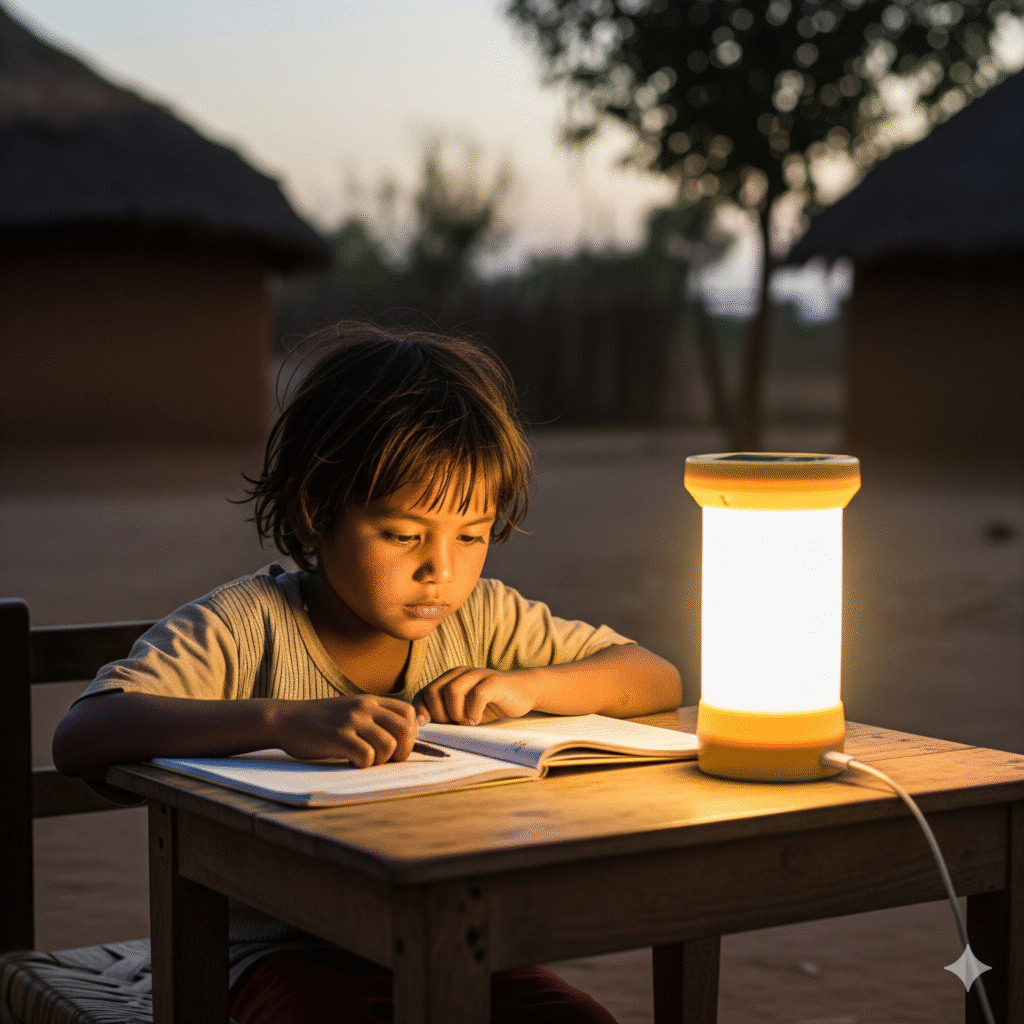
Diplomatic Relations and Peacebuilding
- Conflict Mediation
- Diplomacy has resolved numerous disputes—from the Good Friday Agreement in Northern Ireland to peace talks in Colombia.
- Peacekeeping Missions
- UN Peacekeepers currently serve in hotspots like Mali, South Sudan, and the Democratic Republic of Congo.
- They provide stability, protect civilians, and assist with governance reforms.
- Regional Cooperation
- Regional organizations like the African Union, EU, and ASEAN play increasing roles in conflict prevention.
- Track II Diplomacy
- Involves civil society, NGOs, and academics in building trust between conflicting parties.
The Intersection of Peace, Security, and Sustainable Development
- No Peace Without Development, No Development Without Peace
- Violent conflict can set back development by decades.
- Conversely, poverty and inequality create fertile ground for unrest.
- Sustainable Development Goals (SDGs)
- Goal 16 specifically focuses on peace, justice, and strong institutions.
- Achieving SDGs is essential for long-term global security.
- Climate Change as a Security Issue
- Rising sea levels, desertification, and resource scarcity force migration and increase tensions.
- Example: Water conflicts in the Middle East and Sub-Saharan Africa.
Case Studies in Peace & Security
- Ukraine War (2022–present)
- A reminder of the fragility of the post-Cold War security order.
- NATO unity and sanctions on Russia reflect global responses.
- Middle East Conflicts
- Israeli-Palestinian conflict and tensions in Iran continue to destabilize the region.
- Diplomacy and regional partnerships remain essential.
- African Security Challenges
- The Sahel faces terrorism, migration crises, and governance issues.
- African Union’s peace missions show regional ownership of solutions.

The Future of Global Peace and Security
- Strengthening Global Governance
- Reforming the UN Security Council to reflect current global realities.
- Increasing representation from Africa, Asia, and Latin America.
- Investing in Preventive Diplomacy
- Addressing root causes of conflict before they escalate.
- Greater funding for early-warning systems and mediation.
- Harnessing Technology for Peace
- Data analytics and AI can help predict conflict hotspots.
- Virtual reality and augmented reality are being used in peace education and dialogue simulations.
- Promoting Inclusion and Diversity in Peace Processes
- Women and youth participation improves peacebuilding outcomes.
- Diversity leads to more durable peace agreements.
Conclusion
Building peace and ensuring security in an uncertain world requires more than military might. It demands international cooperation, strong diplomatic relations, robust international law, effective humanitarian aid, and sustainable development strategies.
As global threats evolve—from climate change to cyberwarfare—the concept of security must expand beyond borders to focus on human dignity, equality, and resilience. True peace is not just the absence of war; it is the presence of justice, opportunity, and shared prosperity. The future of global peace depends on our ability to foster trust, strengthen institutions, and embrace collaboration. Only through collective action can we transform uncertainty into stability and conflict into lasting peace.

